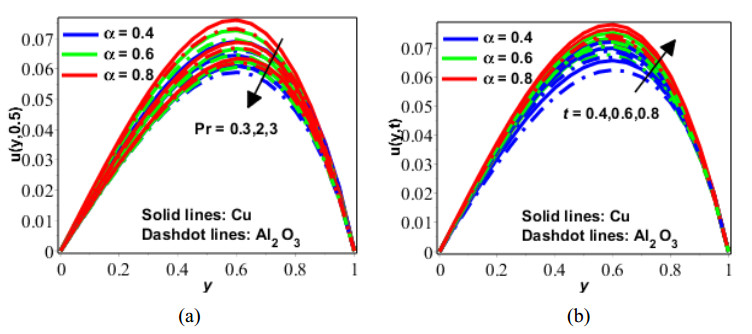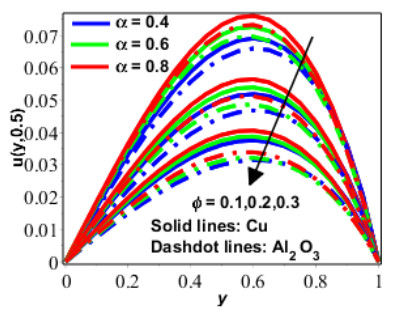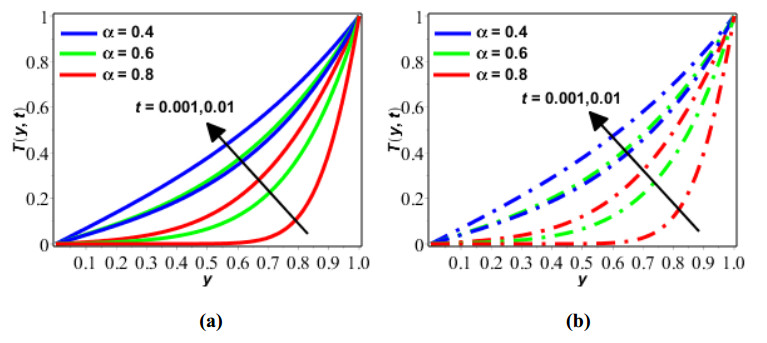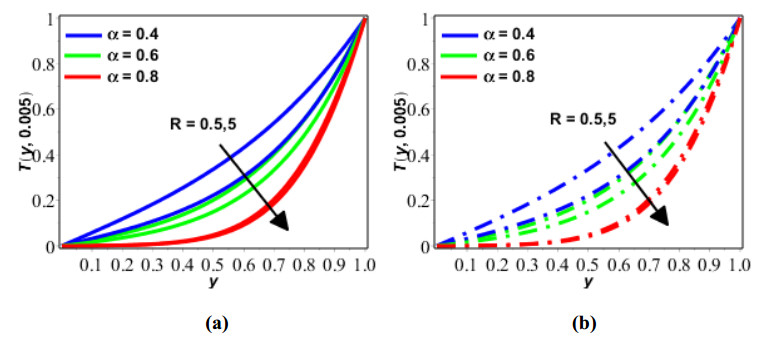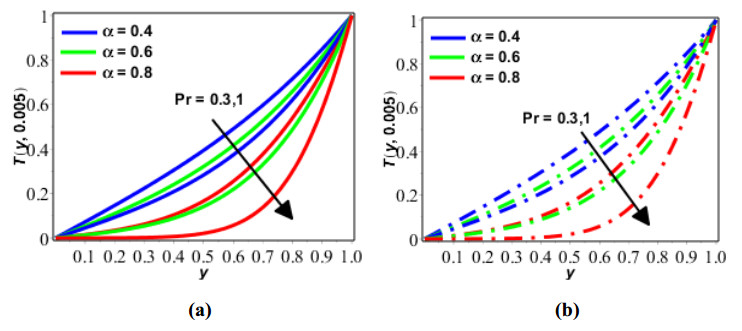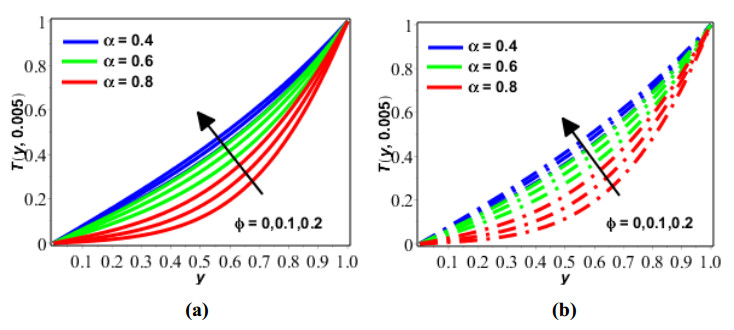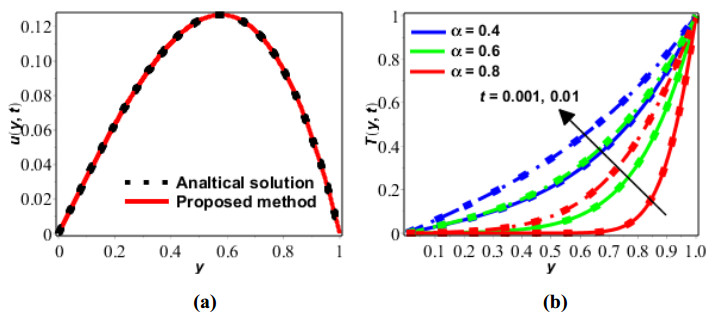| 1.
|
Khalil Ur Rehman, Qasem M. Al-Mdallal, Iskander Tlili, M.Y. Malik,
Impact of heated triangular ribs on hydrodynamic forces in a rectangular domain with heated elliptic cylinder: Finite element analysis,
2020,
112,
07351933,
104501,
10.1016/j.icheatmasstransfer.2020.104501
|
|
| 2.
|
Tamour Zubair, Tiao Lu, Kottakkaran Sooppy Nisar, Muhammmad Usman,
A semi-relativistic time-fractional Vlasov-Maxwell code for numerical simulation based on circular polarization and symmetric two-stream instability,
2021,
22,
22113797,
103932,
10.1016/j.rinp.2021.103932
|
|
| 3.
|
Iftikhar Ahmad, Samaira Aziz, Nasir Ali, Sami Ullah Khan,
Radiative unsteady hydromagnetic 3D flow model for Jeffrey nanofluid configured by an accelerated surface with chemical reaction,
2021,
50,
2688-4534,
942,
10.1002/htj.21912
|
|
| 4.
|
Mostafa Abbaszadeh, Mehdi Dehghan,
A POD-based reduced-order Crank-Nicolson/fourth-order alternating direction implicit (ADI) finite difference scheme for solving the two-dimensional distributed-order Riesz space-fractional diffusion equation,
2020,
158,
01689274,
271,
10.1016/j.apnum.2020.07.020
|
|
| 5.
|
Sundar Sindhu, Bijjanal Jayanna Gireesha,
Effect of nanoparticle shapes on irreversibility analysis of nanofluid in a microchannel with individual effects of radiative heat flux, velocity slip and convective heating,
2021,
50,
2688-4534,
876,
10.1002/htj.21909
|
|
| 6.
|
Rahila Naz,
Featuring the radiative transmission of energy in viscoelastic nanofluid with swimming microorganisms,
2020,
117,
07351933,
104788,
10.1016/j.icheatmasstransfer.2020.104788
|
|
| 7.
|
Mostafa Abbaszadeh, Mehdi Dehghan, Ionel Michael Navon,
A POD reduced-order model based on spectral Galerkin method for solving the space-fractional Gray–Scott model with error estimate,
2020,
0177-0667,
10.1007/s00366-020-01195-5
|
|
| 8.
|
Sameh E Ahmed, Anas A M Arafa,
Impacts of the fractional derivatives on unsteady magnetohydrodynamics radiative Casson nanofluid flow combined with Joule heating,
2020,
95,
1402-4896,
095206,
10.1088/1402-4896/abab37
|
|
| 9.
|
Umair Ali, Muhammad Sohail, Farah Aini Abdullah,
An Efficient Numerical Scheme for Variable-Order Fractional Sub-Diffusion Equation,
2020,
12,
2073-8994,
1437,
10.3390/sym12091437
|
|
| 10.
|
Yun Ding, ZuiSen Li, YongZhong Shi, DeYu Zhong,
Analytical solution to one-dimensional mathematical model of flow and morphological evolution in open channels,
2020,
63,
1674-7321,
2606,
10.1007/s11431-020-1721-6
|
|
| 11.
|
Ndolane SENE,
A new approach for the solutions of the fractional generalized Casson fluid model described by Caputo fractional operator,
2020,
2587-2648,
10.31197/atnaa.752330
|
|
| 12.
|
Manjappa Archana, Mundalamane Manjappa Praveena, Kondlahalli Ganesh Kumar, Sabir Ali Shehzad, Manzoor Ahmad,
Unsteady squeezed Casson nanofluid flow by considering the slip condition and time‐dependent magnetic field,
2020,
49,
2688-4534,
4907,
10.1002/htj.21859
|
|
| 13.
|
Zafar H. Khan, Waqar A. Khan, R.U. Haq, M. Usman, M. Hamid,
Effects of volume fraction on water-based carbon nanotubes flow in a right-angle trapezoidal cavity: FEM based analysis,
2020,
116,
07351933,
104640,
10.1016/j.icheatmasstransfer.2020.104640
|
|
| 14.
|
M. Ferdows, MD. Shamshuddin, S. O. Salawu, K. Zaimi,
Numerical simulation for the steady nanofluid boundary layer flow over a moving plate with suction and heat generation,
2021,
3,
2523-3963,
10.1007/s42452-021-04224-0
|
|
| 15.
|
Kharabela Swain, Basavarajappa Mahanthesh, Fateh Mebarek‐Oudina,
Heat transport and stagnation‐point flow of magnetized nanoliquid with variable thermal conductivity, Brownian moment, and thermophoresis aspects,
2021,
50,
2688-4534,
754,
10.1002/htj.21902
|
|
| 16.
|
Muhammad Imran Asjad, Muhammadish Danish Ikram, Ali Akgül,
Analysis of MHD viscous fluid flow through porous medium with novel power law fractional differential operator,
2020,
95,
1402-4896,
115209,
10.1088/1402-4896/abbe4f
|
|
| 17.
|
Ambreen Sarwar, Tao Gang, Muhammad Arshad, Iftikhar Ahmed,
Construction of bright-dark solitary waves and elliptic function solutions of space-time fractional partial differential equations and their applications,
2020,
95,
0031-8949,
045227,
10.1088/1402-4896/ab6d46
|
|
| 18.
|
Dauda G Yakubu, Mohammed Abdulhameed, Adamu G Tahiru, Rozaini Roslan, Alibek Issakhov, Mohammad Rahimi-Gorji, Mohsen Bakouri,
Towards the exact solutions of Burger’s fluid flow through arteries with fractional time derivative magnetic field and thermal radiation effects,
2021,
0954-4089,
095440892110133,
10.1177/09544089211013317
|
|
| 19.
|
Z.H. Khan, Muhammad Hamid, W.A. Khan, L. Sun, H. Liu,
Thermal non-equilibrium natural convection in a trapezoidal porous cavity with heated cylindrical obstacles,
2021,
126,
07351933,
105460,
10.1016/j.icheatmasstransfer.2021.105460
|
|
| 20.
|
Tamour Zubair, Muhammad Imran Asjad, Muhammad Usman, Jan Awrejcewicz,
Higher-Dimensional Fractional Order Modelling for Plasma Particles with Partial Slip Boundaries: A Numerical Study,
2021,
11,
2079-4991,
2884,
10.3390/nano11112884
|
|
| 21.
|
Muhammad Hamid, Muhammad Usman, Yaping Yan, Zhenfu Tian,
An efficient numerical scheme for fractional characterization of MHD fluid model,
2022,
162,
09600779,
112475,
10.1016/j.chaos.2022.112475
|
|
| 22.
|
Muhammad Hamid, Muhammad Usman, Yaping Yan, Zhenfu Tian,
A computational numerical algorithm for thermal characterization of fractional unsteady free convection flow in an open cavity,
2023,
166,
09600779,
112876,
10.1016/j.chaos.2022.112876
|
|
| 23.
|
Tamour Zubair, Tiao Lu, Muhammad Usman, Kottakkaran Sooppy Nisar, Khadiga Ahmed Ismail,
Higher-order accurate and conservative hybrid numerical scheme for multi-variables time-fractional Vlasov-Maxwell system: An Atangana-Baleanu Caputo approach,
2022,
61,
11100168,
5269,
10.1016/j.aej.2021.10.048
|
|
| 24.
|
W. Abbas, Ahmed M. Megahed,
Powell-Eyring fluid flow over a stratified sheet through porous medium with thermal radiation and viscous dissipation,
2021,
6,
2473-6988,
13464,
10.3934/math.2021780
|
|
| 25.
|
Vemula Rajesh, Mandava Srilatha, Mikhail A. Sheremet,
Effects of temperature oscillation on unsteady MHD hybrid nanofluid motion over a semi‐infinite moving vertical sheet,
2022,
51,
2688-4534,
818,
10.1002/htj.22331
|
|
| 26.
|
Hamood Ur Rehman, Mustafa Inc, Muhammad Imran Asjad, Azka Habib, Qamar Munir,
New soliton solutions for the space-time fractional modified third order Korteweg–de Vries equation,
2022,
24680133,
10.1016/j.joes.2022.05.032
|
|
| 27.
|
Zahid Khan, Sami ul Haq, Farhad Ali, Mulugeta Andualem,
Free convection flow of second grade dusty fluid between two parallel plates using Fick’s and Fourier’s laws: a fractional model,
2022,
12,
2045-2322,
10.1038/s41598-022-06153-3
|
|
| 28.
|
Mahantesh M. Nandeppanavar, R. Madhusudhan, Achala L. Nargund, S. B. Sathyanarayana, M. C. Kemparaju,
Application of HAM to laminar boundary layer flow over a wedge with an external magnetic field,
2022,
51,
2688-4534,
170,
10.1002/htj.22301
|
|
| 29.
|
Tanay Sarkar, Santanu Raut, Prakash Chandra Mali, Qichun Zhang,
The Classification of the Exact Single Travelling Wave Solutions to the Constant Coefficient KP-mKP Equation Employing Complete Discrimination System for Polynomial Method,
2022,
2022,
2577-7408,
1,
10.1155/2022/3844031
|
|
| 30.
|
Dolat Khan, Poom Kumam, Ilyas Khan, Arshad Khan, Wiboonsak Watthayu, Muhammad Arif,
Scientific investigation of a fractional model based on hybrid nanofluids with heat generation and porous medium: applications in the drilling process,
2022,
12,
2045-2322,
10.1038/s41598-022-10398-3
|
|
| 31.
|
Bullo Hindebu Rikitu, O. D. Makinde, Lemi Guta Enyadene,
Unsteady mixed convection of a radiating and reacting nanofluid with variable properties in a porous medium microchannel,
2022,
92,
0939-1533,
99,
10.1007/s00419-021-02043-8
|
|
| 32.
|
Rajesh Kumar Chandrawat, Varun Joshi,
Numerical Solution of the Time-Depending Flow of Immiscible Fluids with Fuzzy Boundary Conditions,
2021,
6,
2455-7749,
1315,
10.33889/IJMEMS.2021.6.5.079
|
|
| 33.
|
Giacomo Ascione, Enrica Pirozzi,
Generalized Fractional Calculus for Gompertz-Type Models,
2021,
9,
2227-7390,
2140,
10.3390/math9172140
|
|
| 34.
|
Ming Shen, Hui Chen, Mengchen Zhang, Fawang Liu, Vo Anh,
A comprehensive review of nanofluids with fractional derivatives: Modeling and application,
2022,
11,
2191-9097,
3235,
10.1515/ntrev-2022-0496
|
|
| 35.
|
Feroz Ahmed Soomro, Rizwan Ul Haq, Muhammad Hamid,
Brownian motion and thermophoretic effects on non-Newtonian nanofluid flow via Crank–Nicolson scheme,
2021,
91,
0939-1533,
3303,
10.1007/s00419-021-01966-6
|
|
| 36.
|
Muhammad Hamid, Muhammad Usman, Wei Wang, Zhenfu Tian,
Semi-spectral computational algorithm for fractional characterization of time-dependent fluid model with convergence and stability analysis,
2023,
1745-5030,
1,
10.1080/17455030.2023.2176178
|
|
| 37.
|
Tamour Zubair, Muhammmad Usman, Muhammad Ahmad,
Numerical impact of symmetric two-stream instability on fractional-order plasma model based on specific geometry with LASER light,
2022,
96,
0973-1458,
4327,
10.1007/s12648-022-02350-y
|
|
| 38.
|
Muhammad Usman, Weaam Alhejaili, Muhammad Hamid, Nawab Khan,
Fractional analysis of Jeffrey fluid over a vertical plate with time-dependent conductivity and diffusivity: A low-cost spectral approach,
2022,
63,
18777503,
101769,
10.1016/j.jocs.2022.101769
|
|
| 39.
|
Kottakkaran Sooppy Nisar, Muhammad Shoaib, Muhammad Asif Zahoor Raja, Yasmin Tariq, Ayesha Rafiq, Ahmed Morsy,
Design of neural networks for second-order velocity slip of nanofluid flow in the presence of activation energy,
2023,
8,
2473-6988,
6255,
10.3934/math.2023316
|
|
| 40.
|
Wei Cai, Ping Wang,
Fractional modeling of temperature-dependent mechanical behaviors for glassy polymers,
2022,
232,
00207403,
107607,
10.1016/j.ijmecsci.2022.107607
|
|
| 41.
|
Zehba Raizah, Arshad Khan, Saadat Hussain Awan, Anwar Saeed, Ahmed M. Galal, Wajaree Weera,
Time-dependent fractional second-grade fluid flow through a channel influenced by unsteady motion of a bottom plate,
2023,
8,
2473-6988,
423,
10.3934/math.2023020
|
|
| 42.
|
An‐Cheng Ruo, Wei‐Mon Yan, Min‐Hsing Chang,
The onset of natural convection in a horizontal nanofluid layer heated from below,
2021,
50,
2688-4534,
7764,
10.1002/htj.22252
|
|
| 43.
|
ILYAS KHAN, AISHA M. ALQAHTANI, ARSHAD KHAN, DOLAT KHAN, ABDUL HAMID GANIE, GOHAR ALI,
NEW RESULTS OF FRACTAL FRACTIONAL MODEL OF DRILLING NANOLIQUIDS WITH CLAY NANOPARTICLES,
2022,
30,
0218-348X,
10.1142/S0218348X22500244
|
|
| 44.
|
Rusya Iryanti Yahaya, Mohd Shafie Mustafa, Norihan Md Arifin, Ioan Pop, Fadzilah Md Ali, Siti Suzilliana Putri Mohamed Isa,
Hybrid nanofluid flow past a biaxial stretching/shrinking permeable surface with radiation effect: Stability analysis and heat transfer optimization,
2023,
85,
05779073,
402,
10.1016/j.cjph.2023.06.003
|
|
| 45.
|
Muhammad KAURANGİNİ, Isyaku Shu'aibu ABDULMUMİNİ, Umar Muhammad ABUBAKAR,
Fractional time derivative on fluid flow through horizontal microchannel filled with porous material,
2023,
4,
2757-6574,
53,
10.55212/ijaa.1290060
|
|
| 46.
|
Soner Aydinlik, Ahmet Kiris, Wojciech Sumelka,
Three-Dimensional Plate Dynamics in the Framework of Space-Fractional Generalized Thermoelasticity: Theory and Validation,
2024,
0001-1452,
1,
10.2514/1.J063310
|
|
| 47.
|
Zafar H Khan, Oluwole D Makinde, Muhammad Usman, Rashid Ahmad, Waqar A Khan, Zaitang Huang,
Inherent irreversibility in unsteady magnetohydrodynamic nanofluid flow past a slippery permeable vertical plate with fractional-order derivative,
2023,
10,
2288-5048,
2049,
10.1093/jcde/qwad090
|
|
| 48.
|
Tamour Zubair, Muhammad Usman, Muhammad Hamid,
Computational analysis for the modeling of fractional time-dependent Maxwell fluid,
2023,
1745-5030,
1,
10.1080/17455030.2023.2226226
|
|
| 49.
|
Mostafa Abbaszadeh, Mohammad Ivan Azis, Mehdi Dehghan,
A mesh-free method using Pascal polynomials for analyzing space-fractional PDEs in irregular biological geometries,
2024,
169,
09557997,
105932,
10.1016/j.enganabound.2024.105932
|
|
| 50.
|
Rabia Naz, Muhammad Danish Ikram, Muhammad Imran Asjad,
Analytical solutions of fractional couple stress fluid flow for an engineering problem,
2023,
12,
2192-8029,
10.1515/nleng-2022-0281
|
|
| 51.
|
O. D. Makinde, Zafar Hayat Khan, Alexander Trounev, Waqar A. Khan, Rashid Ahmad,
Fractional dynamics of entropy generation in unsteady mixed convection of a reacting nanofluid over a slippery permeable plate in Darcy–Forchheimer porous medium,
2024,
104,
0044-2267,
10.1002/zamm.202400083
|
|
| 52.
|
Tamour Zubair, Syeda Alishwa Zanib, Muhammad Imran Asjad,
A novel definition of the caputo fractional finite difference approach for Maxwell fluid,
2024,
43,
2238-3603,
10.1007/s40314-024-02728-0
|
|
| 53.
|
Muhammad Usman, Muhammad Hamid, Mohamed Hussien, Ahmed M Hassan, Dianchen Lu,
Fractional order study of magnetohydrodynamical time-dependent flow of Prandtl fluid,
2024,
53,
2214157X,
103841,
10.1016/j.csite.2023.103841
|
|
| 54.
|
Bahram Jalili, Majdeddin Emad, Payam Jalili, Davood Domiri Ganji, Salman Saleem, Elsayed M. Tag-eldin,
Thermal analysis of boundary layer nanofluid flow over the movable plate with internal heat generation, radiation, and viscous dissipation,
2023,
49,
2214157X,
103203,
10.1016/j.csite.2023.103203
|
|
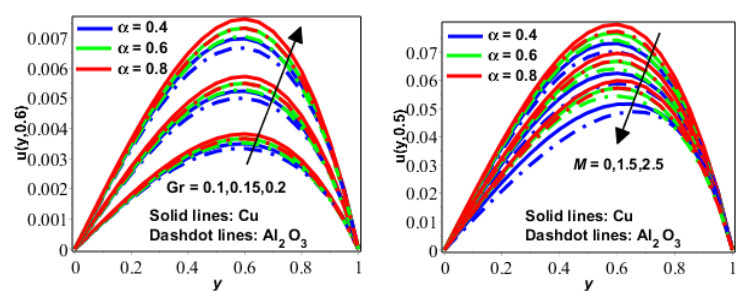









 DownLoad:
DownLoad:
